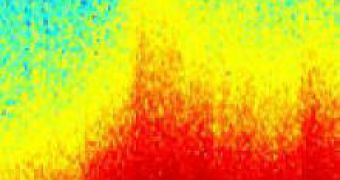When the sea floor off the coast of Sumatra split on the morning of December 26, 2004, it took days to measure the full extent of the rupture. Recently, researchers at Columbia University's Lamont-Doherty Earth Observatory analyzed recordings of the underwater sound produced by the magnitude 9.3 earthquake. Their unique approach enabled them to track the rupture as it moved along the Sumatra-Andaman Fault, raising the possibility that scientists could one day use the method to track underwater earthquakes in near real time and opening new avenues in seismologic research.
The earthquake occurred along a stretch of the fault known as a subduction zone, where the India Plate is slowly being pushed beneath the Burma Plate. "The fault basically unzipped from south to north," said DelWayne Bohnenstiehl, a Doherty Associate Research Scientist and co-author of the study. "By looking at the direction the sound comes from, you can get a pretty clean look at the way it broke."
What is surprising, however, is the fact that the earthquake appeared to occur in two distinct phases. The first phase encompassed the first three minutes of the eight-minute earthquake, during which the rupture proceeded north at about 1.7 miles per second (2.8 km/sec) from the epicenter. During the second phase, the rupture slowed to 1.3 miles per second (2.1 km/sec) and continued north for another five minutes until it reached a plate boundary where the fault changes from subduction to strike-slip, where the two plates push past one another in opposite directions. This suggests that had the subduction continued, this longest ever recorded earthquake might have been even longer.
If you want to download the Mp3 file with the sound of the earthquake, click here.

 14 DAY TRIAL //
14 DAY TRIAL //